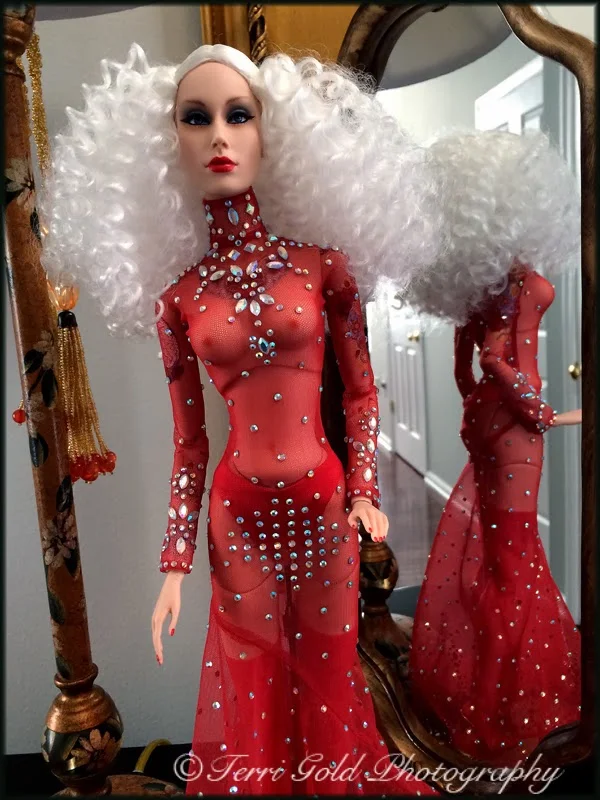Isaac Mizrahi said it was a dream for him. From what I see of these two fashion dolls, it looks like the dream was a nightmare.
Neither the fashions nor the dolls approach any standard most of us collectors would use in our own collections. Where is the fashion DESIGN? What's up with the awkward looking fur hat? Either the photographer should be killed or the outfit is just downright awful.
| Isaac Mizrahi Classic Iconic – Limited Edition $199.95 |
| Isaac Mizrahi Modern Iconic – Limited Edition $999.95 |
Priced at $999.95, seriously? Does she come with extra wigs and fashions?
The play dolls are listed at $69.95.
Glamour in Lace
This 18″ Isaac Mirzahi designed doll has light skin, blue eyes, long silky blonde hair pulled back with a fancy black satin headband, perfect for hours of styling fun, plus she has a soft huggable body for lots of hugs! She is ready to play and arrives wearing a gold metallic dress and coordinating golden brown metallic jacket with a leopard plush belt with matching black ballet flats.
Hooray
This 18″ Isaac Mirzahi designed doll has light skin, brown eyes, long silky brown hair with side bangs styled in a loose up ‘do for hours of playtime fun, plus she has a soft huggable body for lots of hugs! She is ready to play and arrives wearing a “HOORAY” pink and golden knit sweater hoodie over a pink shiny party dress, golden ballet flats and is sporting a pair of iconic Isaac Mizrahi logoed black sunglasses.
Cutie
This 18″ Isaac Mirzahi designed doll has light skin, blue eyes, long silky blonde hair pulled back with a metallic silver ribbon, perfect for hours of styling fun, plus she has a soft huggable body for lots of hugs! She is ready to play and arrives wearing a “CUTIE” blue cropped shirt over a blue and white gingham button-down, paired with a navy and white polka-dot skirt with coordinating blue sparkly sneakers plus she is sporting a pair of iconic Isaac Mizrahi logoed black sunglasses.
Wild About Leopard
This 18″ Isaac Mirzahi designed doll has dark brown skin, brown eyes, curly black hair pulled back with a metallic gold bowed headband, perfect for hours of styling fun, plus she has a soft huggable body for lots of hugs! She is ready to play and arrives wearing a leopard knit print shirt and skirt trimmed in gold with a black and gold lined stretch velvet hoodie and gold Mary Janeʼs, plus she is sporting a pair of iconic Isaac Mizrahi logoed black sunglasses.
Message for Mr. Mizrahi: Stick to hats, tweezers and golf cart bags.
 |
| 2009 Fall Isaac Mizrahi |
All that being said, he has excellent taste in dogs.


















